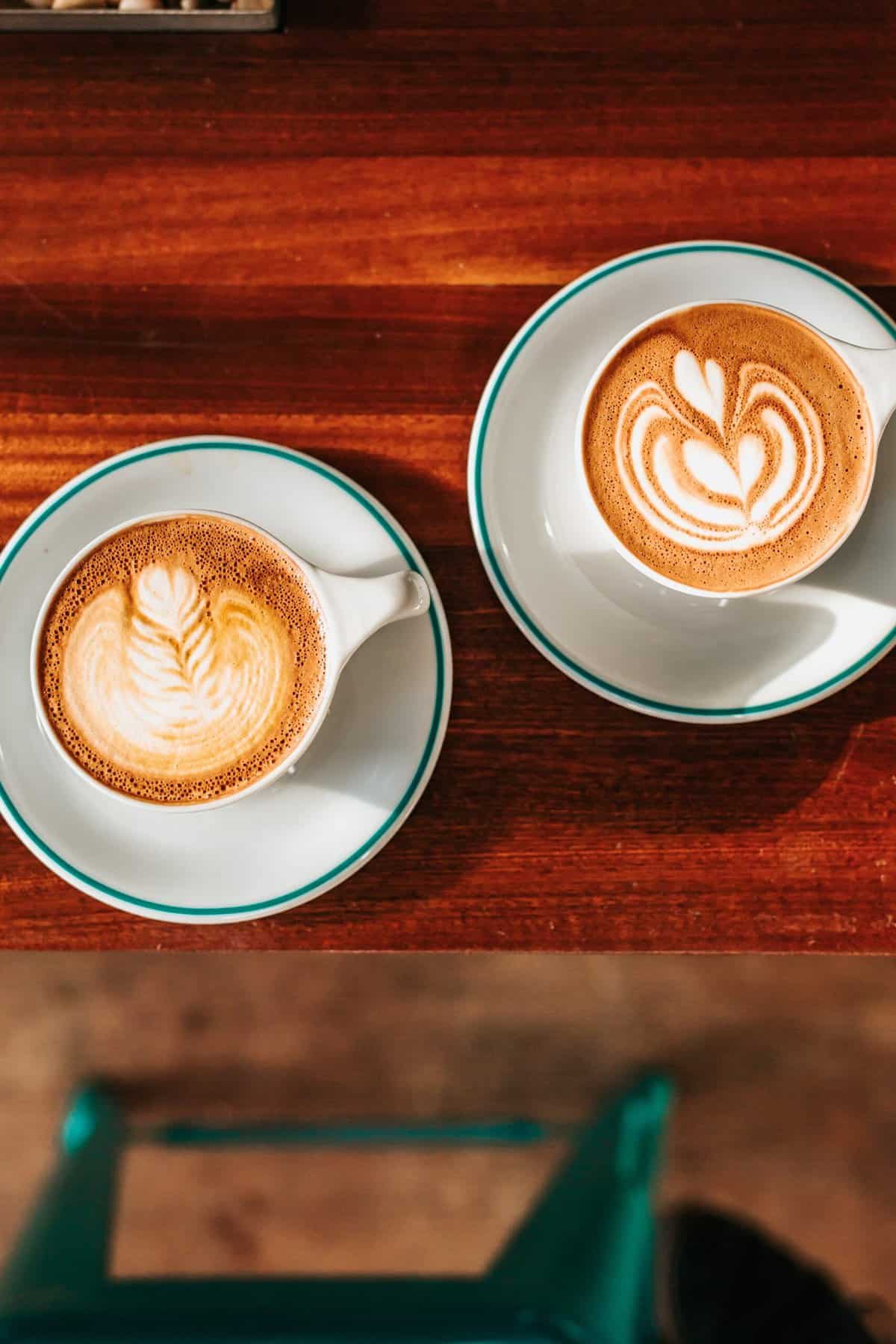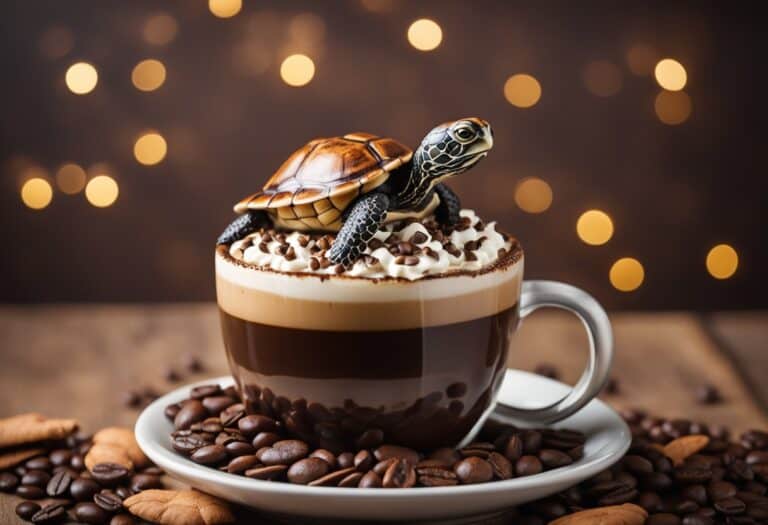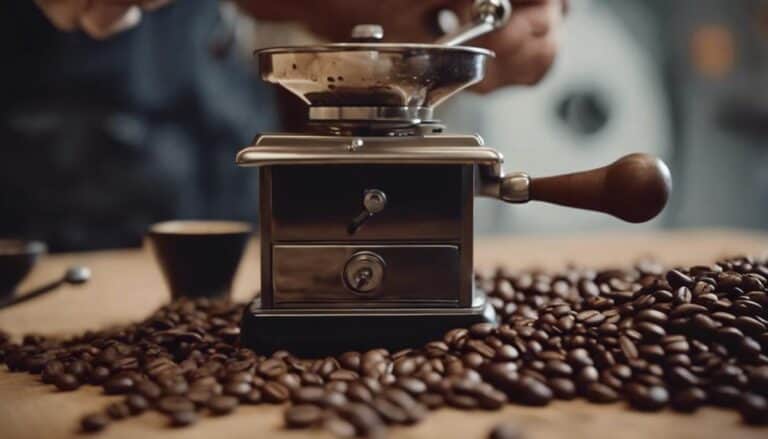Latte vs Cappuccino: Which One Packs a Stronger Punch?

When it comes to espresso-based drinks, two of the most popular options are the latte and cappuccino. While the two beverages may seem similar at first glance, there are several key differences that set them apart. One of the most common questions people have is which one is stronger, the latte or cappuccino?
To answer this question, it’s important to understand what goes into each drink. Both the latte and cappuccino are made with espresso, but the amount of milk and foam used can vary. A latte typically contains more milk than a cappuccino, which results in a creamier and less intense flavor. On the other hand, a cappuccino has less milk and more foam, which gives it a stronger coffee taste.
So, which one is stronger? While the answer may vary depending on personal preferences, most people would agree that a cappuccino is generally stronger than a latte. This is due to the fact that it has less milk and more foam, which allows the espresso flavor to come through more prominently. However, it’s important to note that both drinks contain the same amount of espresso, so the caffeine content is identical.
Key Takeaways
- The amount of milk and foam used in a latte and cappuccino can vary, resulting in different taste and texture.
- While both drinks contain the same amount of espresso, a cappuccino is generally considered stronger due to its higher foam content.
- When it comes to choosing between a latte and cappuccino, it ultimately comes down to personal preference and taste.
Understanding Espresso-Based Drinks
Espresso-based drinks are some of the most popular beverages in the world. They are made by combining espresso shots with different amounts of milk and foam. The most common espresso drinks are lattes, cappuccinos, and macchiatos. In this section, we will focus on lattes and cappuccinos and answer the question, which is stronger?
Espresso
Before we dive into the differences between lattes and cappuccinos, it’s important to understand espresso. Espresso is a concentrated form of coffee that is made by forcing hot water through finely ground coffee beans using an espresso machine. The result is a strong and flavorful shot of coffee that is the foundation of many espresso-based drinks.
Latte
A latte is a popular espresso-based drink that is made by combining a shot of espresso with steamed milk and a small amount of foam. Lattes are known for their creamy texture and mild coffee flavor. They are often sweetened with flavored syrups and topped with whipped cream.
Cappuccino
A cappuccino is another popular espresso-based drink that is made by combining equal parts of espresso, steamed milk, and foam. Cappuccinos are known for their strong coffee flavor and dry foam texture. They are often served with a sprinkle of cocoa powder on top.
Which is Stronger?
So, which is stronger, a latte or a cappuccino? The answer is that it depends on how you define strength. If you define strength as the intensity of the coffee flavor, then a cappuccino is stronger than a latte. Cappuccinos have a higher ratio of espresso to milk, which gives them a stronger coffee flavor.
However, if you define strength as the amount of caffeine, then a latte and a cappuccino are equally strong. Both drinks contain the same amount of espresso, which means they have the same amount of caffeine.
In conclusion, the strength of an espresso-based drink depends on how you define strength. If you prefer a stronger coffee flavor, then a cappuccino may be the better choice for you. If you prefer a milder coffee flavor, then a latte may be the way to go.
Latte: A Detailed Look
When it comes to coffee-based beverages, the latte is a popular choice for many. A latte typically consists of a shot of espresso, steamed milk, and a thin layer of milk foam on top. The ratio of espresso to milk is usually 1:2, making it a creamy and smooth drink.
One of the defining features of a latte is its steamed milk. This process involves heating the milk to a certain temperature and then using a steam wand to create a creamy and velvety texture. The steamed milk is then poured over the espresso shot, creating a beautiful layered effect.
Another important aspect of a latte is its milk foam. The foam is created by using the steam wand to introduce air into the milk, creating a frothy layer on top of the drink. This layer not only adds to the aesthetic appeal of the latte but also provides a light and airy texture to the drink.
Latte art has become a popular trend in recent years, with baristas creating intricate designs on the surface of the milk foam. This not only adds to the visual appeal of the drink but also showcases the skill and creativity of the barista.
A latte can be enjoyed hot or cold, with iced lattes being a popular choice during the summer months. Additionally, there are variations of the latte, such as the café latte and latte macchiato, which differ in their milk content and preparation method.
For those who are lactose intolerant or prefer non-dairy alternatives, there are also various milk alternatives that can be used in a latte, such as almond milk or oat milk.
When comparing a latte to a cappuccino, one of the main differences is the quantity of milk used. A latte typically contains more steamed milk and less foam, whereas a cappuccino has a higher ratio of foam to milk. Ultimately, the choice between a latte and cappuccino comes down to personal preference and taste.
Cappuccino: A Comprehensive Analysis
When it comes to coffee, cappuccino is a classic choice that has been enjoyed for centuries. This drink is made up of equal parts espresso, steamed milk, and milk foam, which gives it a unique texture and flavor. In this section, we will take a closer look at cappuccino and analyze its various components to understand why it is such a beloved coffee drink.
Foam and Milk
One of the defining characteristics of cappuccino is its foam layer. This layer is created by steaming milk and then using a spoon to scoop the foam on top of the espresso. The foam is an essential part of the drink, as it provides a creamy texture and adds to the overall flavor profile.
Cappuccinos can be made with either dry or wet foam. Dry foam has a denser texture, while wet foam is lighter and more airy. The type of foam used can affect the overall strength and flavor of the drink.
In addition to the foam layer, cappuccinos also contain steamed milk. The milk is heated to a specific temperature and then added to the espresso. The milk helps to balance out the strong flavor of the espresso, making the drink more palatable.
Layered Drink
Cappuccinos are a layered drink, which means that each sip contains a mixture of espresso, milk, and foam. The layers are created by pouring the espresso into the cup first, followed by the steamed milk, and then the foam. This layering technique helps to create a complex flavor profile that is both rich and creamy.
Microfoam
A key element of a well-made cappuccino is microfoam. This is a type of foam that is created by steaming the milk to a specific temperature and then carefully incorporating it into the espresso. Microfoam is thicker and creamier than regular foam, and it helps to create a velvety texture in the drink.
History
The origins of cappuccino can be traced back to Italy in the early 1900s. The drink was named after the Capuchin friars, who wore brown robes that were similar in color to the drink. Cappuccino quickly became popular in cafes throughout Italy and eventually spread to other parts of the world.
Strength
When it comes to strength, cappuccino is generally considered to be a milder coffee drink. The equal parts of espresso, steamed milk, and foam help to balance out the strong flavor of the espresso, making it more palatable. However, the strength of the drink can vary depending on the type of foam used and the amount of espresso in the drink.
In conclusion, cappuccino is a classic coffee drink that has stood the test of time. Its unique texture and flavor profile make it a favorite among coffee lovers around the world. Whether you prefer a dry or wet cappuccino, one thing is for sure – this drink is sure to satisfy.
Comparing Taste and Texture
When it comes to comparing the taste and texture of a latte and a cappuccino, there are a few key differences to keep in mind. Both drinks are made with espresso and milk, but the ratios and preparation methods are different, which affects the overall taste and texture.
A cappuccino typically has a stronger coffee flavor and a creamier texture. This is because it is made with equal parts espresso, steamed milk, and milk foam. The foam adds a creamy texture and a slightly sweet flavor to the drink. Some cappuccinos may also be served with a sprinkle of cocoa powder or cinnamon on top for added flavor.
On the other hand, a latte has a smoother, silkier texture and a more milk-based espresso taste. This is because it is made with a double shot of espresso and steamed milk, with only a thin layer of milk foam on top. Lattes are often sweeter than cappuccinos because they contain more milk, which adds natural sweetness to the drink.
When it comes to sweetness, both lattes and cappuccinos can be customized with sweeteners like sugar, honey, or flavored syrups. However, it’s important to keep in mind that adding sweeteners can affect the overall taste and texture of the drink.
Overall, the choice between a latte and a cappuccino comes down to personal preference. If you prefer a stronger coffee flavor and a creamier texture, a cappuccino may be the better choice. If you prefer a smoother, silkier texture and a more milk-based espresso taste, a latte may be the way to go.
Caffeine Content: Latte vs Cappuccino
When it comes to caffeine content, both latte and cappuccino are made with espresso, which means they have a similar caffeine content. However, the amount of caffeine in each drink can vary depending on the size and the ratio of milk to espresso.
A standard 8-ounce cappuccino typically contains around 75 milligrams of caffeine, while a 12-ounce latte contains approximately 155 milligrams of caffeine. This difference is due to the fact that lattes contain more milk than cappuccinos, which dilutes the espresso and reduces the caffeine content.
It’s worth noting that the caffeine content can also vary depending on the type of beans used to make the espresso and the brewing method. For example, espresso made with darker roasted beans tends to have less caffeine than espresso made with lighter roasted beans.
If you’re looking for a stronger caffeine boost, a cappuccino might be a better option. However, if you prefer a creamier and milder coffee experience, a latte might be more your style.
It’s important to remember that caffeine affects everyone differently, so it’s best to listen to your body and consume caffeine in moderation.
Nutritional Differences
When it comes to the nutritional differences between a latte and a cappuccino, there are a few key factors to consider. While both drinks contain espresso, the amount of milk used can vary, which impacts the overall nutritional value.
One significant difference is the fat content. A cappuccino typically contains less milk than a latte, which means it may have a lower overall fat content. However, this can vary depending on the type of milk used. For example, a cappuccino made with whole milk will have a higher fat content than one made with non-fat milk.
Calories are another consideration. A cappuccino typically has fewer calories than a latte, again due to the difference in milk content. However, the calorie count can vary depending on the size of the drink and any additional flavorings or sweeteners added.
When it comes to protein, both drinks contain some, but the amount will vary depending on the type of milk used. Non-fat milk will generally have a higher protein content than whole milk.
Carbohydrates are also a factor to consider. Both drinks contain some carbs, but the amount will depend on any added sweeteners or flavorings, as well as the type of milk used.
Overall, while there are some nutritional differences between a latte and a cappuccino, the exact values will depend on the specific ingredients used. It’s important to be mindful of portion sizes and any additional flavorings or sweeteners added to these drinks to ensure they fit into a balanced diet.
Variations and Additions
When it comes to variations and additions, both lattes and cappuccinos offer a lot of versatility. Baristas can get creative with different syrups and flavors to make unique drinks, and customers can customize their orders to their liking.
One popular addition to lattes and cappuccinos is flavored syrups. Vanilla, caramel, and hazelnut are some of the most common flavors, but there are many others to choose from. These syrups can add a touch of sweetness and flavor to the drink without overpowering the coffee.
Another popular addition is cinnamon. This spice can be sprinkled on top of the foam for a warm and comforting flavor. Some baristas even create intricate designs or patterns with the cinnamon to make the drink look even more appealing.
For those who prefer tea over coffee, a latte can also be made with mate instead of espresso. Mate is a type of tea that is popular in South America, and it has a strong and earthy flavor that pairs well with milk.
For those who want a stronger coffee flavor, a macchiato is a good option. This drink is made with a shot of espresso and a small amount of steamed milk, so the coffee flavor is more prominent.
In terms of size, lattes and cappuccinos can be made in a variety of different glasses or cups. Some people prefer a small and strong drink, while others want a larger and creamier drink. It all comes down to personal preference.
Overall, lattes and cappuccinos offer a lot of room for creativity and customization. Whether you prefer a classic drink or something more unique, there are plenty of options to choose from.
Making Your Own: Recipes and Techniques
When it comes to making your own latte or cappuccino at home, there are a few recipes and techniques to keep in mind. Both drinks require a base of espresso and milk, but the key difference is in the milk foam.
To make a latte, start by brewing a shot of espresso and steaming your milk. Pour the steamed milk over the espresso, leaving a small layer of foam on top. For a stronger latte, use a double shot of espresso instead of a single. You can also add flavored syrups or spices like cinnamon to customize your latte.
For a cappuccino, the key is in the milk foam. Start by brewing a shot of espresso and frothing your milk until it is thick and velvety. Pour the frothed milk over the espresso, leaving a thick layer of foam on top. The ratio of milk to foam should be equal, so use a smaller amount of milk if you want a thicker foam layer.
To create latte art, use a spoon to hold back the foam while pouring the steamed milk into the espresso. Then, use the spoon to create designs on top of the foam layer. For cappuccino art, use the foam as a canvas and create designs using a toothpick or other small tool.
Experiment with different types of milk, like almond or oat milk, for a unique flavor. Keep in mind that different types of milk may require different steaming and frothing techniques.
Overall, making your own latte or cappuccino at home is a fun and rewarding experience. With a little practice and experimentation, you can create a delicious and personalized coffee drink that rivals those from your favorite coffee shop.
Conclusion
We have explored the differences between latte and cappuccino, including their ingredients, caffeine content, flavor, and nutritional value. While both drinks are made with espresso and milk, they differ in the amount and texture of milk used, as well as the ratio of espresso to milk.
In terms of caffeine content, a latte generally has more caffeine than a cappuccino due to its larger size and higher milk content. However, the exact amount of caffeine can vary depending on the type and amount of espresso used.
When it comes to flavor, a cappuccino is generally considered to have a stronger espresso taste due to its higher ratio of espresso to milk and thicker foam layer. A latte, on the other hand, is smoother and creamier due to its higher milk content and thinner foam layer.
In terms of nutritional value, both drinks can be high in calories and fat depending on the type and amount of milk used. However, a cappuccino is generally considered to be a slightly healthier option due to its lower milk content and thicker foam layer, which can help to reduce the overall volume of the drink.
Overall, the choice between a latte and a cappuccino comes down to personal preference. If you prefer a stronger espresso taste and a thicker foam layer, a cappuccino may be the way to go. However, if you prefer a smoother and creamier texture with a higher milk content, a latte may be more your style. Regardless of your choice, both drinks can be enjoyed as a delicious and satisfying way to start your day.






One Comment